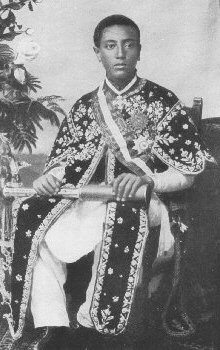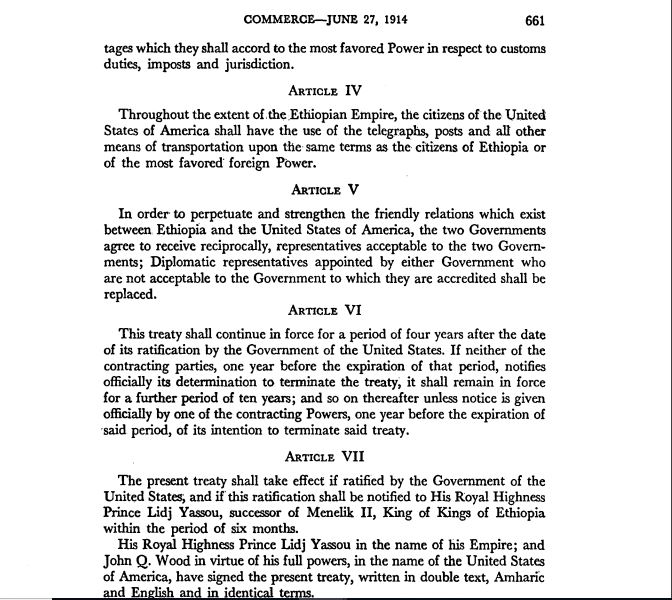By 1914, the United States of America, “desirous of emphasizing the friendly relations which have long prevailed between their peoples…and of encouraging mutually beneficial investments and closer economic intercourse generally between their peoples”, signed its first African treaty with Ethiopia.
The Amity And Economic Relations Agreement Treaty, signed in Addis Ababa by the uncrowned Emperor of Ethiopia, Prince Lij Iyasu (1913-1916) and John Q. Wood, U.S. diplomat at the time, on behalf of president Woodrow Wilson, allowed for free movements of citizens and goods between both countries.

Prince Iyasu, grandson of Emperor Menelik II of Ethiopia, reigned only for a few years as Emperor amidst stiff opposition from his family. He was deposed in favor of his aunt, Zewditu, who succeeded him to become the first empress of the nation. This treaty remains one of the most prominent things he did under his reign.
Today, although Ethiopia is not a member of the World Trade Organization (WTO), it has long been in the accession process. Member countries of the World Trade Organization (WTO) are required under the Agreement on Technical Barriers to Trade (TBT Agreement) to report to the WTO all proposed technical regulations that could affect trade with other Member countries.
Other treaties that Ethiopia is signatory to are the Treaty Establishing the Common Market for Eastern and Southern Africa (COMESA) (Kampala, 5 November 1993); Agreement Establishing Intergovernmental Authority on Development (IGAD) (Nairobi, March 1996); African, Caribbean, and Pacific Group States (ACP)-European Union (EU) Economic Partnership Agreement (Cotonou, 23 June 2000); and at the continental level, Ethiopia has signed and ratified the Abuja Treaty that aims to establish an Africa Economic Community among the continents 54 countries.
Below is the full text of the treaty between Ethiopia and the United States signed in 1914:













